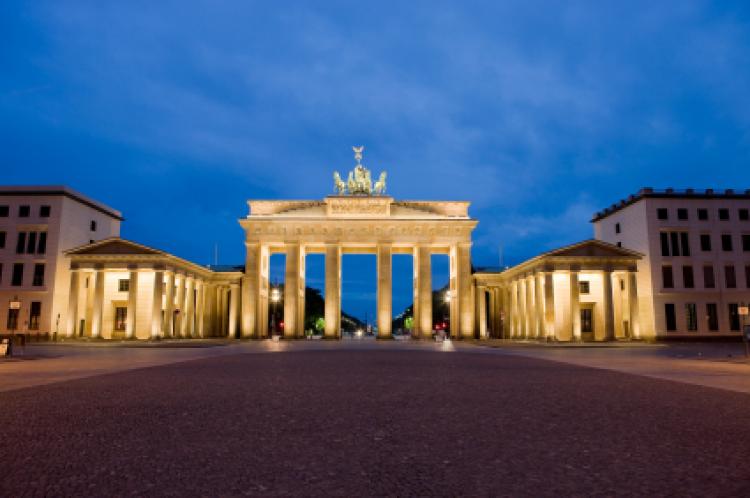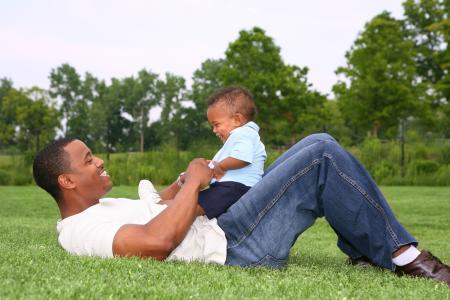
May Day
May Day in Germany is a holiday to celebrate the start of spring and to campaign for workers' rights. It is always on May 1.
German Unity Day (Tag der Deutschen Einheit) is annually held on October 3 to mark the anniversary of the nation's unification. It remembers when the Federal Republic of Germany and the Democratic Republic of Germany united to create one single, federal Germany on October 3, 1990.
Day of German Unity is a public holiday. It is a day off for the general population, and schools and most businesses are closed.

Germany Unity Day is celebrated throughout Germany, including cities such as Berlin (pictured above).
©iStockphoto.com/btrenkel
Many people have a day off work and big public celebrations are organized. These include:
The celebrations' atmosphere is festive, welcoming and safe. Each year a different city hosts the national celebrations. Many mosques in Germany are open to the general public on October 3. This is an initiative to stimulate contact between Muslims and non-Muslims and to emphasize the role that Muslims played in forming modern Germany. German Unity Day is the only national holiday in Germany, as all other holidays are administered by the individual states.
German Unity Day is a public holiday in Germany so post offices, banks and many businesses are closed. Nearly all stores are closed, although a few may be open in some city areas. Bakeries, petrol stations and stores at railway stations, airports and near highways are often open. Public transport services may run as usual, at a reduced service or no service depending on where one lives or intends to travel. There may be some disruption to traffic around large celebrations.
Following World War II, the area that was Germany was divided into four military sectors controlled by France, the United Kingdom, the United States and the Soviet Union. On May 23, 1949, the sectors controlled by France, the United Kingdom and the United States became the Federal Republic of Germany. On October 7, 1949, the sector controlled by the Soviet Union became the German Democratic Republic, which in Germany is generally referred to as the DDR (Deutsche Demokratische Republik).
The two countries developed very different political and economic systems and, due to the political tensions in post-war Europe, there was little contact between the inhabitants of the two countries. Life in the DDR was characterized by harsh repression against political adversaries. Thousands of inhabitants were kept under intimate surveillance by the infamous East German secret police, the Stasi (Staatssicherheit). At least 137 people died trying to escape from the DDR.
On September 4, 1989 citizens of Leipzig protested peacefully against the DDR government. More so-called “Monday demonstrations” soon took place in other cities across the DDR. The protests called for political reform and to open the borders. On November 9, 1989, the checkpoints between the two countries were opened and people were allowed to travel freely. This date marked the "fall" of the Berlin wall.
These events lead to political change. Democratic elections paved the way for unity in the German Democratic Republic on March 18, 1990. The "Treaty of Unification" was signed by both countries' leaders in August that year. Finally, Germany's unification became official on October 3, 1990.
The Brandenburg Gate and the Berlin wall were two important symbols of Germany's division following World War II and Berlin's and Germany's unification in 1990. Images of the Brandenburg Gate and the Berlin wall's destruction are often displayed on German Unity Day. The German unification treaty also symbolizes the day and its meaning.
Germany's flag is displayed, particularly on public buildings, on German Unity Day. This flag is three units high and five units wide and is divided horizontally into thirds. The top third is jet black, the middle third traffic red and the bottom third is gold. Together these colors represent the freedom of Germany as a whole and each of its people. In the past, the colors represented: the darkness of servitude (black); bloody conflict (red); and the light of freedom (gold).
| Year | Weekday | Date | Name | Holiday Type |
|---|---|---|---|---|
| 2019 | Thu | Oct 3 | Day of German Unity | National holiday |
| 2020 | Sat | Oct 3 | Day of German Unity | National holiday |
| 2021 | Sun | Oct 3 | Day of German Unity | National holiday |
| 2022 | Mon | Oct 3 | Day of German Unity | National holiday |
| 2023 | Tue | Oct 3 | Day of German Unity | National holiday |
| 2024 | Thu | Oct 3 | Day of German Unity | National holiday |
| 2025 | Fri | Oct 3 | Day of German Unity | National holiday |
| 2026 | Sat | Oct 3 | Day of German Unity | National holiday |
| 2027 | Sun | Oct 3 | Day of German Unity | National holiday |
| 2028 | Tue | Oct 3 | Day of German Unity | National holiday |
| 2029 | Wed | Oct 3 | Day of German Unity | National holiday |
While we diligently research and update our holiday dates, some of the information in the table above may be preliminary. If you find an error, please let us know.

May Day in Germany is a holiday to celebrate the start of spring and to campaign for workers' rights. It is always on May 1.

Ascension Day in Germany is on a Thursday 39 days after Easter Sunday.

Father’s Day celebrates fatherhood and male parenting on different dates worldwide.

Mother’s Day celebrates the achievements and efforts of mothers and mother figures.